Please use the following link to download the March 1, 2025 issue of the syəcəb
Jeanne McLean

Jeanne Juanita McLean, Tulalip Tribal member, born on October 29, 1943 in Tulalip, WA to Stan Jones Sr. and Arlene Charles-Holding. She passed away peacefully surrounded by her loved ones on February 24, 2025. She is survived by her mom, JoAnn Jones; siblings, Teri (Billy), Gayle, Gary (Karen) and Karen; and her children, Mike, Kenny, Michelle and Shawn; several grandchildren and great grandchildren and special cousin Kathy Craft. She is also survived by many extended loved ones. She was loved by all and will be greatly missed.
Celebrate Recovery: Annual Problem Gambling Awareness Community Dinner is March 15
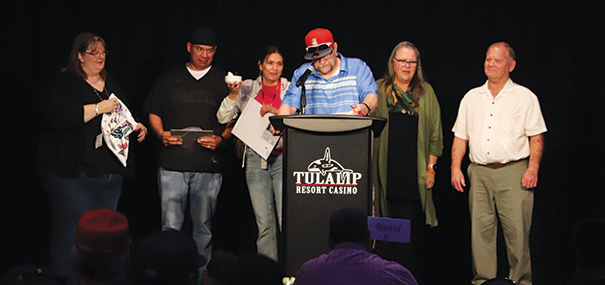
By Kalvin Valdillez, Tulalip News
It is a truly beautiful moment to witness the recovery countdown and see dozens of Tulalip community members recognized for their work in taking back control against what is often referred to as a silent disease. An estimated two million US citizens meet the criteria for severe gambling addiction any given year, according to the National Council on Problem Gambling. And though that is roughly just one percent of the entire country’s population, there are hundreds of families affected by problem gambling and the multiple issues that stem from the disease.
The recovery countdown occurs every year at the Tulalip Problem Gambling’s annual community dinner. Starting at 50 years, the event MC calls out increments of time down to one month. Each person who has attained the corresponding amount of gaming sobriety under their belt, stands up and is met with applause for their time, effort, and resiliency in the battle of their addiction. What started as a small gathering held in the halls of the Hibulb Cultural Center, has grown as word about the program has spread and more people are coming forward about their addiction and seeking aid.
The Tribe’s Problem Gambling program is a national model program that many Indigenous tribes look to when designing and operating their own programs. They are also a part of a northwest intertribal problem gambling coalition with the Swinomish, Lummi, Stillaguamish, Port Gamble, Suquamish, Puyallup, Muckleshoot, and Nisqually tribes. They meet regularly to discuss what is and what isn’t working for their programs and to share ideas on how to educate their communities and provide prevention and treatment to those in need of assistance.
Over recent years, the community dinner has increased in participation, so much so that the event is now held at the Orca Ballroom of the Tulalip Resort Casino. In addition to the countdown, the dinner also includes live testimonies from recovering gambling addicts who share their trials and tribulations, but more importantly their triumphs. This gives the people in attendance an opportunity to relate, and it also serves as a moment to help inspire those who may be currently struggling.
Last year, a local woman who wishes to remain anonymous, opened up about her personal recovery journey with the Problem Gambling program. She stated, “I was pretty much a daily gambler for about 15 years. My rock bottom was losing my job and when that happened is when I finally realized what I was doing. Those two weeks after I lost my job – that was probably the worst experience of my life. I wasn’t sleeping, I wasn’t eating, I was in physical pain all day long. I went through a couple of weeks of just really an all-consuming guilt and shame, and it was horrific.
“And then I thought, you know what, I just need to find a GA meeting. So, I went online and found a GA meeting and attended my first meeting in Everett, where I met this guy who told me about the Problem Gambling program. The next week I went and had an assessment, and the rest is history. I have just over 10 months of sobriety and will reach my first year In April.”
Overall, the program has become a reliable source for those attempting to put an end to their gambling addiction. Throughout the years, it has helped those in recovery by developing a personalized plan with each person who walks through their doors. Since its establishment, the Problem Gambling program has served not only members of the Tulalip tribal community, but non-Natives as well who are also fighting a gambling addiction and live in our neighboring communities of Everett, Marysville, Arlington, and Stanwood.
The dinner occurs every March and is part of a national initiative known as National Problem Gambling Awareness Month, which was founded as a response to NCAA’s March Madness tournament. The Tulalip Problem Gambling Program has participated in the initiative for well over a decade and the amount of support and community participation is both impressive and uplifting.
The 2025 community dinner will be held on Saturday, March 15, at 6:00 p.m. in the TRC Orca Ballroom. As mentioned before, there will be the recovery countdown and speakers from the local problem gambling recovery community. There will also be a number of special guests including the 206 Singers, Tribal member Natosha Gobin, and this year’s event MC, Vaughn Eaglebear. And as many can attest, humor is a major aspect of healing for us as Native people, and for this reason, the program enlisted comedian JR Redwater (Standing Rock Sioux-Hunkpapa Lakota) as the headliner.
Said Sarah Sense Wilson, Tulalip Problem Gambling Coordinator, “We are excited to be hosting another annual Problem Gambling Awareness Community Dinner. We invite you all to share in celebrating recovery together. This is a special evening where we lift the voices of recovery, and enjoy fabulous entertainment, endless laughs, and amazing cuisine. This is a family friendly, free event. Please be sure to RSVP at (360) 716-4400.”
Hawks close out Summit Classical Christian with clutch play, take 3rd place at Tri-Districts

By Micheal Rios, Tulalip News
A year ago, the Tulalip boys were playing in the 4th round of the Tri-District Tournament hosted at Mt. Vernon Christian. In a highly contested game with the Muckleshoot Kings, the Hawks claimed a 3rd place finish after a thrilling 65-59 W.
Fast forward to this past weekend, the Tulalip boys were again playing in the 4th round of the Tri-District Tournament. This time it was hosted at the newly minted Muckleshoot Community Center. Their opponent? Summit Classical Christian (15-5) out of Issaquah. Just like last year, it would be another knock-down, drag-out battle that would come down to late game execution with a 3rd place finish and 2-game guarantee at State on the line.
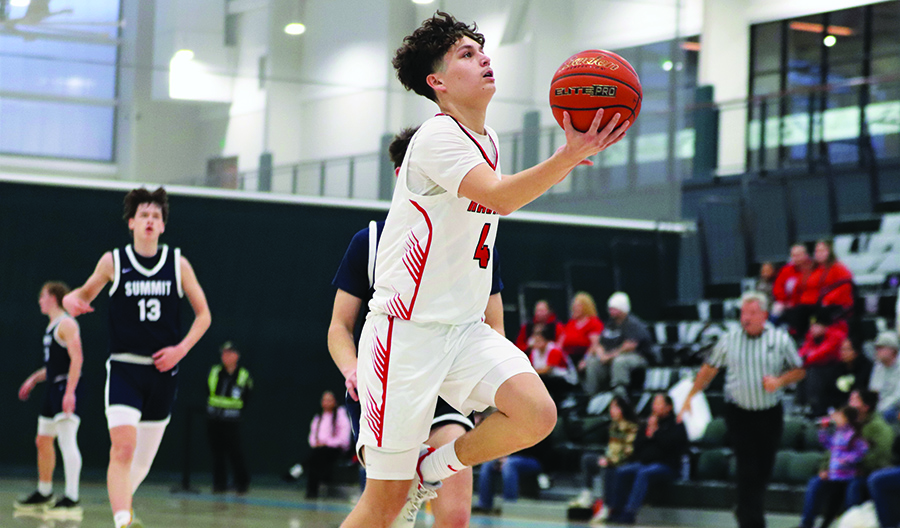
The bright lights of Muckleshoot’s gym made for the perfect backdrop of what would be an epic example of clutchness by the Heritage Hawks (18-3). From the opening tip, it was clear the game would be a battle of wills and contrasting styles of play. Summit had all the height with several six-footers on the court at all times, but what Heritage lacked in height they made up for with blazing speed and quickness.
In the 1st quarter, Tulalip was determined to push the tempo and attack the basket regardless if shot blockers awaited them or not. They wanted Summit to know that they’d keep attacking and weren’t afraid of any contact from a would-be six-foot defender. Their constant pressure on the defense yielded multiple uncontested looks from downtown, where Amare splashed one and Davien splashed two, giving Heritage an early 20-13 lead.

Summit was intentional about getting the ball down low and consistently exploiting mismatches to their advantage in the 2nd quarter. Their height and rebounding ability were difficult to counter in the half court sets. Fortunately, Davien continued to his hot shooting from outside by hitting back-to-back 3-pointers. Notably, he was the only Hawk to get a bucket in the 2nd quarter. Going into halftime the game was knotted at 30-30.
Both teams scored exactly 13 points in the 3rd quarter. Summit’s scoring came from contested jumpers and long distance 2s, while Heritage’s offense came from a series of runners and floaters in the painted area.

Entering the 4th quarter, the game was tied 43-43. Guards J.J. Gray and Davien both showed their athletic prowess with a fancy finish each, contorting their bodies to get a shot off while multiple defenders went for a block attempt. Scoring on high degree of difficulty shots, Summit countered by splashing a 3 and then another long 2.
Trailing 47-48 with 6:30 to play, coach Shawn Sanchey put Amare back in the game with 4 fouls. In high school ball, players only get 5 fouls. Amare’s foul trouble forced him to sit out the entire 3rd quarter and opening plays of the 4th. The bench time meant he had the fresh legs necessary to ignite his team’s uptempo style again.
Amare back in the game gave Tulalip a 3-headed ballhandling monster that Summit was too exhausted and too worn down to keep up with. Over the game’s final six minutes, the boys decisive decision making and commitment to ball movement resulted in crisp passes and clutch buckets to the delight of their adoring fan base.

With the three ballhandlers dissecting the defense, forwards Davis and Tokala each scored two buckets apiece in the closing moments to clinch victory. A final score of 66-53 after once trailing 47-48 meant a so impressive 19-5 run by Heritage down the stretch to secure another Tri-District 3rd place finish.
Following the game, sophomore point guard Amare Hatch said of playing the final frame with 4 fouls, “My mindset was to keep playing hard defense, keep my hands up, and to stay out of my head so I could just play ball. I know my role is to bring the energy and when I’m spreading the ball around, it just opens up the game for everyone else. That’s when we’re playing our best. It feels really good to get this dub in front of all our fans and even the bigger tribal community who showed up to support us here in Muckleshoot.”

While Amare only finished with 3 points, he filled the intangibles box score by showcasing heart, hustle and grit when his team needed him most. J.J finished with 19 points, Davis added 12 points, and Davien continued to add to his resume by leading all scorers with 26 points, including making 4 of the team’s 5 made 3-pointers.
“Compared to all the height Summit had, we are a smaller run and gun team, but we are powered by a group of guards who will run for 4 quarters and not get tired,” said junior shooting guard Davien Parks. “At this point in the playoffs, we are going to keep seeing teams with more size and bigger bodies but when you have confidence in your game, like we do, that won’t stop us from playing our brand of basketball. Confidence can make up for a lot. For me, I believe I can takeover in any game I play and that this team can beat anybody in the State.”

A Heritage Hawks team full of confidence and armed with a determination to make school history now move on to the WIAA State Tournament. Their first round opponent is Willapa Valley. Game scheduled for 8pm Friday, February 28, at W.F. High School in Chehalis.
February 22, 2025 syəcəb
Please use the following link to download the February 22, 2025 issue of the syəcəb
Strengthening safety through partnership

By Wade Sheldon, Tulalip News
On Wednesday, February 12, the Tulalip Tribes Board of Directors met with Snohomish County Sheriff Susanna Johnson to strengthen community safety efforts and enhance interagency collaboration. During the meeting, tribal leaders, including Board members Misty Napeahi and Debra Posey, presented the sheriff with a check for $225,000 to upgrade the department’s crime analysis capabilities, a critical tool in modern law enforcement.
“The money we receive from the Tulalip Tribes supports our crime analyst and enhances our information systems,” said Sheriff Johnson. “It helps us track crime trends to deploy resources better, apprehend suspects, and address public health challenges. By monitoring arrests, substance use, and behavioral health data, we can focus resources more effectively and improve public safety.”
Crime analysis involves systematically collecting and reviewing data to identify trends, patterns, and hotspots that inform proactive policing strategies. Sheriff Johnson explained that access to accurate and timely crime data enables her team to allocate resources efficiently and respond more effectively. “Our crime analyst’s work is invaluable,” she noted. “It’s not just about reacting to events—it’s about understanding the full picture. With improved systems we can share data across jurisdictions and ensure that every call, from domestic disturbances to public health emergencies, is accurately coded and addressed.”
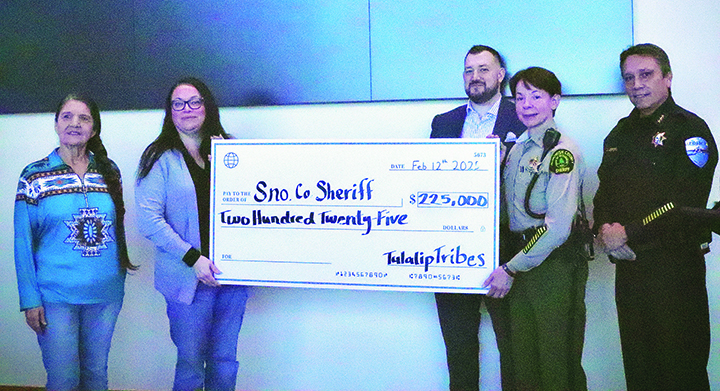
Sheriff Johnson emphasized the importance of strong partnerships with Tulalip and other tribes in Washington. “To serve all communities effectively, we must have these collaborations. We learn not only from tribal leaders but also by understanding cultural nuances that might otherwise be overlooked. Whether working with community members, crime victims, or suspects, this partnership strengthens our ability to serve fairly and effectively.”
Misty Napeahi and Debra Posey emphasized that this initiative involves more than just technology—it focuses on building trust and cultural competency. They pointed out that collaborations with tribal communities ensure law enforcement strategies are shaped by cultural insights, which is crucial for fairly serving crime victims and those accused of crimes.
Tulalip Police Department Chief Shawn Ledford expressed optimism about the collaboration, stating that it sets a precedent for how tribal and county agencies can collaborate to address modern challenges. “This partnership is a step toward safer communities for everyone,” Ledford said.
This collaborative effort highlights the power of data-driven decision-making and the shared responsibility of protecting communities. By analyzing data and fostering meaningful partnerships, Snohomish County and the Tulalip Tribes are creating a model for effective, community-focused law enforcement that can inspire similar initiatives across the region.
Sustainable skincare meets tradition in Amoreena Anderson’s Coast Salish Soaps

By Wade Sheldon; photos courtesy of Amoreena Anderson
The following small business owner is highlighted in our six-part series on handmade crafts and art for the April 12 General Council meeting: Tulalip tribal member Amoreena Anderson, owner of Coast Salish Soaps. Her sugar scrubs were selected as part of the gifts the Board of Directors chose for tribal members who attend the meeting. This initiative encourages participation in the vote and provides a platform for small businesses to showcase their products and artwork to the community.
For Anderson, running her own business is about more than selling products—it’s a deeply personal and fulfilling experience.

“It’s incredibly gratifying. Being my own boss allows me to control my work environment and choose what I create,” she shares. But beyond the freedom of entrepreneurship, her work has strengthened her family bonds. “It has also brought my children and me closer together. I make special soaps for my daughter and grandkids based on their needs, and that inspires me to develop products for the community as well.”
Her journey into soap-making began in 2011, but it wasn’t until around 2014 that she started making and selling soaps, including shampoo and conditioner bars. She obtained her official tribal business license between 2017 and 2018, allowing her to sell on the reservation legally.
As much as she loves creating, Anderson admits that marketing has been challenging, especially given her commitment to sustainability. “At the end of the day, owning my business is empowering. However, I’ll admit I struggle with marketing. I prefer a ‘naked’ product—no label or packaging—because I want to leave a minimal carbon footprint. Some people complain about it, but I want them to enjoy a great product.”

Despite this, her business has flourished. The order of sugar scrubs for the General Council meeting is her most significant yet, though her experience proves she’s more than ready for the challenge. “This is the largest order of sugar scrubs I’ve ever had. However, I’ve made nearly 10,000 bars of soap over the years,” she says. Her daughter, Maya, loves collecting her soaps, which Anderson appreciates as a tangible reminder of her growth. “I love it because it allows me to see my progress and how much I’ve grown in this business.”
Anderson’s dedication to high-quality ingredients and ethical sourcing truly sets Coast Salish Soaps apart. “I love knowing the ingredients that go into my products. I am very selective about where I source them,” she explains. She prioritizes supporting Black, Indigenous, and People of Color (BIPOC) owned businesses across the U.S. “For example, I source my butter from a business called 3CayG, which is based in Florida. The owner has a shea butter and tree nut butter farm where she teaches and supports women. I also source oils and other materials from local cosmetic suppliers.”
While the fragrances for the General Council gifts remain a surprise, Anderson is excited for attendees to experience her sugar scrubs. “I’m incredibly grateful for this opportunity to share my products with the community. My sugar scrubs have received amazing reviews, and I’ve impressed a lot of people—including myself.”
For Anderson, self-care is at the heart of everything she does. “If I could say anything to others, it would be this: self-care is important. Your skin is the largest living organ on your body—take good care of it. And if you’re thinking about self-care, please think of me!”

Coast Salish Soaps is more than just a business—it reflects Anderson’s passion, dedication, and commitment to her family and community. As she continues to grow, her products nourish the skin and carry a story of resilience, creativity, and care.
As part of Tulalip News’ six-part series on artists and crafts for the upcoming General Council meeting, four more talented innovators will be featured: Elishia Stewart with her delicious jams, Jen Tracy showcasing her stunning orca paintings, Bibianna Ancheta with her revitalizing chapstick, and Walter Moses presenting his elegant cedar clappers. These artists, like Anderson, are using their talents to create meaningful and high-quality products for the community.
Hawks punch their ticket to State with 69-61 win over Muckleshoot
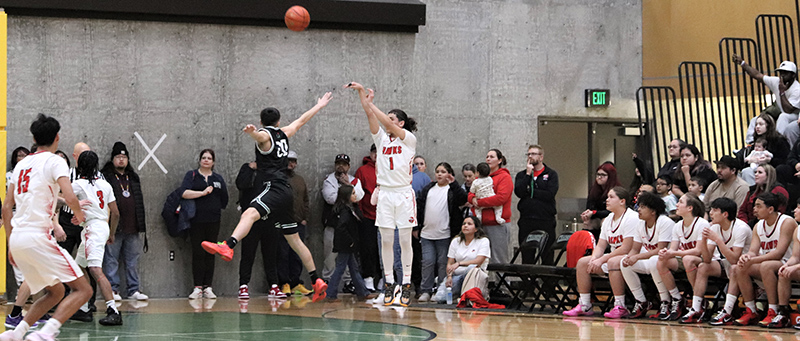
By Micheal Rios, Tulalip News
A second round Tri-District Tournament matchup with the Muckleshoot Kings (16-4) was expected to draw such a large crowd that the game was moved from Francy J. Sheldon gymnasium to Marysville Getchell. Those at the top who made that bold decision were proven right as Rez ball fans from across the I-5 corridor ventured to Marysville to watch the Tulalip Heritage Hawks (17-2) punch their ticket to the WIAA 1B State Tournament.
“The atmosphere at practice this week was good. The boys were excited for this matchup and were eager to play on this floor,” said head coach Shawn Sanchey pre-game. “We know the energy is going to be turned up a notch anytime two tribal school play one another, especially in the playoffs with fan bases that travel super well. There’s going to be a ton of talent on the floor, but we’re expecting our starters to do what they’ve been all season, which is executing our offense and keeping to our style of play.”

In front of hundreds of enthusiastic tribal onlookers, the Hawks and Kings put on a show. Muckleshoot jumped out to an early 9-3 lead with Tulalip’s offense appearing sluggish after the opening whistle. The ‘home team’ quickly responded though. Led by sophomore guard J.J. Gray and junior forward Davien Parks who opted to forgo the 3-ball in favor of attacking their matchup and getting quality looks from the painted area. The Hawks finished the 1st quarter on an 11-3 run to take a 14-12 lead. A lead they would not surrender.
They pushed their lead to 32-28 at halftime, and extended quickly to double-digits after Davien showed a flurry of moves to score around the basket. Up 42-32, Heritage’s offense began firing on all cylinders after shooting just 1-12 from 3-point territory. First, J.J. splashed a 3-ball. Then his backcourt mate, sophomore guard Amare Hatch, splashed back-to-back 3’s that received an eruption from the crowd and bench players.

Tulalip took a commanding 67-47 lead midway in the 4th quarter that gave coach Sanchey the breathing room to pull his starters and give his bench players some burn. Chants of “Tulalip power!” rang out as the final game buzzer sounded and Heritage claimed a 69-61 victory.
Following the game, junior forward Tokala Black Tomahawk reflected on his opportunity to play extended minutes and produce big baskets and rebounds after starter Ziggy Myles exited the game early with an ankle injury. “I just wanted to come in and do my part to help our team get this win,” he said. “This morning my dad told me to just make the most of my time on the court and do my best to go after every rebound. Hearing his voice motivates me and it really paid off tonight.”

Tokala finished the game with 11 points, as did Amare. Davien scored 18 points, but it was the shortest Hawks starter, 5-foot-5 J.J. who led Tulalip with 21 points. He seemingly got a bucket whenever Muckleshoot looked to mount a comeback by penetrating the heart of their defense and scoring over multiple taller players, over and over again.

“When we play team ball, you know, move the ball around and get the defense to chase us around, it wears them down over four quarters. Eventually, the other team gets tired and that’s when our speed and stamina show out,” explained J.J. after the win. “It feels great to get the W because we had this matchup circled ever since we found out us and Muckleshoot were on the same side of the bracket. Looking forward, we just got to stay humble and do us, like always.”
Salish Spirit’s legendary killer whale encounter celebrated on World Whale Day
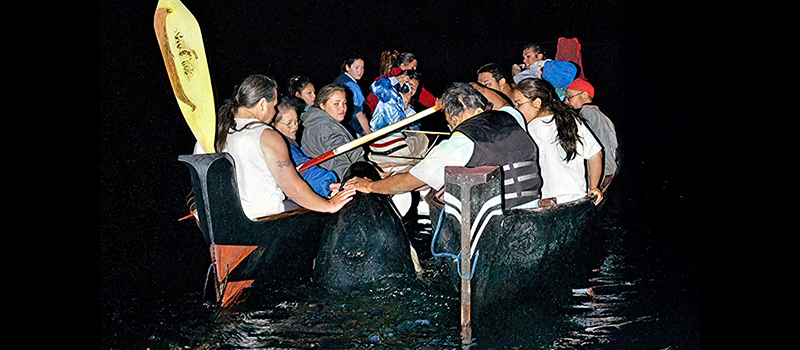
By Micheal Rios, Tulalip News
For generations, the Tulalip Tribes have been stewards of the land and sea. From ancestors long past to present day culture bearers, plus an entire Natural Resources department filled with committed employees, the Tribes’ stewardship is loudest in advocating for stronger protections of marine life. In particular, protecting the endangered Southern Resident killer whales and their primary food source, Chinook salmon.
Both the Southern Resident killer whales and Chinook salmon call the Salish Sea home. Their populations once thrived and flourished in the local waterways. Now, these two species face increasing threats due to global warming, pollution, habitat destruction, and an unregulated seal infestation.
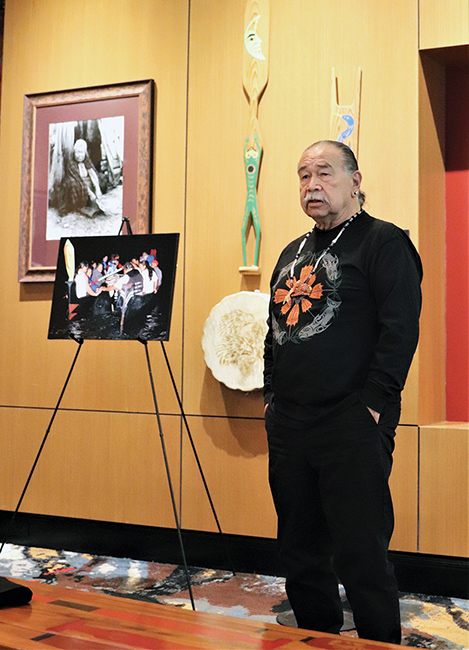
In the spirit of Tulalip’s effort to restore ecological balance and ensure the survival of killer whales, the Tribes’ official logo, an intimate gathering took place within the Tulalip Resort Casino to celebrate World Whale Day. Taking place on the third Sunday in February, World Whale Day is an opportunity to honor these marine marvels and reflect on our culturally rooted relationship with them.
“We regularly create content for our social media platforms to share about Tulalip’s history and culture. In honor of World Whale Day, I thought what better way to share about history and culture than to have Ray Fryberg share his experience with an orca,” explained Kelsie Pablo, H.R. Hiring Manager for the Tulalip Gaming Organization. She reached out to Ray, who with his family, agreed to have their story shared via the Resort’s social media accounts.
“Our team sat down with Ray and recorded his retelling of that legendary encounter. It was an emotional story and a really incredible experience for all the staff involved,” continued Kelsie. “It really didn’t feel like enough to just post a quick video to our socials. So, we asked permission to share the video in our hotel lobby so it could be seen by all our guests who visit and stay at the Resort. We’re so excited to have this video on display and super grateful to Ray and his family for allowing us to share with and educate a larger public audience.”
Adding to the Word Whale Day celebration was the unveiling of a one-of-a-kind, digitally enhanced photo that clearly captured the momentous 2004 encounter between a killer whale and the Salish Spirit canoe family. In the photo, Ray is sitting in his captain’s seat and is embracing a killer whale that emerged from the Salish Sea.
In his retelling of the encounter, Ray, a Tulalip elder and cultural historian for the Tribes, makes it very clear this meeting was not by happenstance. Instead, it was foretold by the late Muchalaht First Nations chief Ambrose Maquinna. Prior to his death, chief Maquinna said that his spirt would be leaving his body soon, but not to worry because he’ll be coming back as a killer whale.
“When Ambrose passed away, within a week that killer whale showed up to their village,” recalled Ray. So, he and his Salish Spirit canoe family journeyed north to determine for themselves if it really was chief Ambrose in killer whale form. “We went out there and tried and tried to see him, but nothing happened. When we headed to shore and were just about to pull our canoe in, that’s when we got word he was seen in the area. So, we jumped back in our canoe and headed out, again.

“It didn’t take long for us to spot the killer whale. We were told that if we saw him to let him know we were here, so we started to sing. We could see him swimming ahead and next thing you know he stopped and turned to look at us. Then he took off and was coming straight at us like a torpedo. He didn’t dive all the way under water, instead he was swimming at the top so that the water was flying up. Right before it looked like he was going to run into us he dove under water and disappeared from sight.
“We didn’t have any idea where he was at. We’re looking all around and then he popped up right between the two canoes, like in the picture,” continued Ray. “He popped up right between chief Kelly and I’s captain seats. When he popped out of the water, he let out this exhale that was so powerful and so loud. He turned his head and looked right at me. We locked eyes and, in that moment, I never felt such strong spiritual energy in my life.”
The Tulalip Tribes, the successors in interest for the Snohomish, Snoqualmie, Skykomish and other allied bands, have a profound spiritual and cultural relationship with the killer whale. Often referred to as “Blackfish,” they are considered family members, protectors, and spiritual guides my many of our tribal members.

The Tribes have long understood, the survival of the killer whale is linked to the survival of the salmon, and the health of both is tied to the well-being of the ocean. Tulalip’s advocacy serves as a reminder that the balance of nature depends on collective effort and respect for the interconnectedness of all life.
After watching his legendary story be played in the hotel lobby and looking upon the stunning photo on display, Tulalip elder reflected, “That is the ultimate validation in the beliefs of my people.”
Richard James Muir Sr.
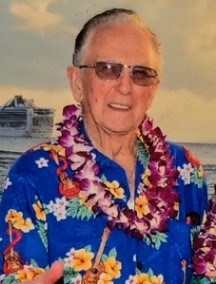
APRIL 9, 1929 – FEBRUARY 13, 2025
Richard James Muir Sr., born in Fortson, Wa. on April 9, 1929, went to join the love of his life, surrounded by family on February 13, 2025. Raised on the Tulalip Reservation at a farm known as “Dunston’s”, for many years growing up with siblings and cousins, then moving to Whitehorse.
Richard served in the U.S. Army at the age of 17 with an honorable discharge. Moving into a logging career in the Aberdeen area.
He married the love of his life, Donna, in March of 1957 and started raising their family. Richard moved his wife and family to a small home in Tacoma, Wa. and opened his own construction business “Muir Construction”. As the years past he remodeled their small home to accommodate his growing family.
In 1977, the family relocated to Tulalip and he built a new home on the family property. He began working for the Tulalip Tribes as their Construction Manager where he was able to train and mentor many young Tulalip men in the construction trade. He was responsible for the Tulalip Hatchery Construction. He remodeled the marine shed to allow the marina to have a store and restaurant for the fishermen and community. He was responsible for building the Tulalip Entertainment Center and he worked with Tulalip Housing building many homes for Tulalip families.
As a result of his work that he did with Tulalip he was made an honorary member of the Tulalip Tribes in April 2002, of which he was very proud.
He was an exemplary father, full of love wisdom and understanding. He had a great sense of humor who would always get his girls started at family gatherings (then get in trouble with his wife).
He also spent many years as a commercial fisherman beside his wife in usual and accustom fishing grounds of Tulalip. Clam digging trips annually with family in Ocean shores, camping for weeks at a time. He bowled avidly raising his children in the bowling alleys of Tacoma and Marysville. He was a skilled gardener and farmer, raising cattle and fowl.
In retirement he and his wife enjoyed spending weeks camping on their lot at Lake Connor Park, having block parties with many of their friends and family. The kids and grand-kids enjoyed camping and swimming on the weekends with them.
Richard spent many years taking daily walks around Hermosa and Totem Beach area enjoying the scenery, visiting with the neighbors while getting his daily exercise.
Richard had a life time membership to the Moose Lodge where he had many life-time friends and enjoyed live music and dancing.
He was survived by: Siblings: Dallas Muir, Rosene Leonard (Bill), Harvey Stevenson, Bernadeen Harvey (Bob), Becki Hilty, Ardella Muir, Arvella Muir and Doyle Muir.
Children: Richard Jr. (Teena), Debra, Deanna and Doreen.
Grandchildren: Nicole, SabraLee, Shiloh, Mitchell, Daniel (Cherish), Breanna, June, Sandra (Kurtis), Danielle, Chaz, Karolyn (Lynzi), Charlie, Michael (Ame), Dakotah, “Nanalilja Sissy and Christjan.
Great Grandchildren: Kecia’Ann (Tim) , Deven, Jaren, Alex, M’Kenzy, Zea’Koaho, Elyssa, Shylah, Ryelon, M’Kenya, Brayden (Daniel Jr.), Harlee’Anne, Karter, Maizleigh, Areaya, Cierra (Trevor) , Dalton (Brittney), Timothy (Matilda), Kurtis (Ariell), Kaycie, Dayla, Daylyn, Brayden, Jaxson, Paizlee, Kamelia, Lailani, Maizee, Kurtis. Jr., Damien, Greg Jr., Emmalynn, Kenneth, Carson, Makena, Payton Jr., Cadence.
Great-Great-Grandchildren: Violet, Maddox, Dylan, Maelani, Timbo, Kayson, Adonis & Braxton
Also survived by: Many close friends, nieces and nephews.
Preceded by: Love of his life – Donna L. Muir; Parent: Blanch Helm Stevenson, Robert (Curley) Muir, Kate Muir. Siblings; Margie, Peggy, Arvel, Barbara, Arlene “Sugar” & Jerry. Grandchild: Jared, Great-Grandchildren; Paul Shay Jr. and Oaklee Muir.
A celebration of his life will be held Wednesday, February 19, 2025 at 10 AM at the Tulalip Gathering Hall with burial to follow at Mission Beach Cemetery.